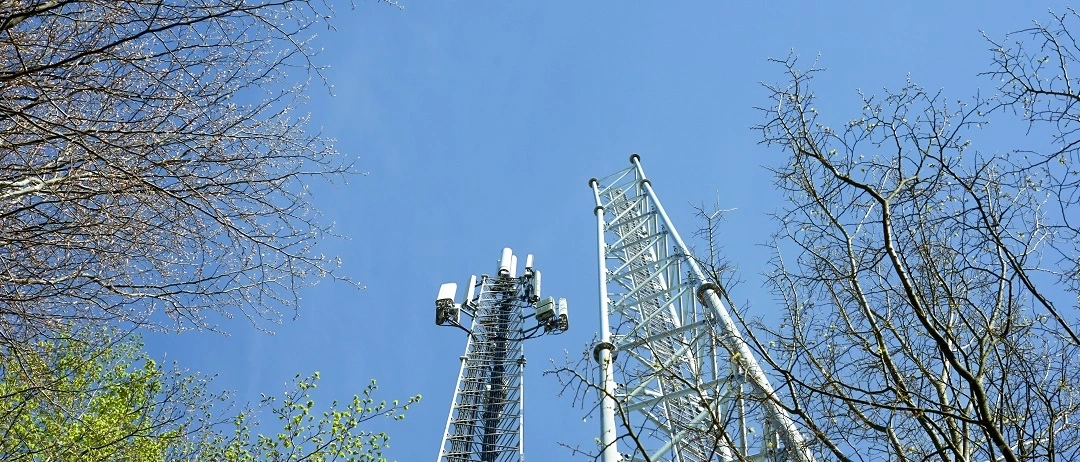
Case study: Forecasting the impact of congestion on network cells
Vodafone is a leading telecommunications company that provides a range of mobile and fixed-line connectivity services for both consumers and businesses. It operates the largest 5G network in Europe and offers pioneering digital products, experiences and services for its customers.
The challenge
Network congestion is a widespread problem for telcos as it diminishes Quality of Service (QoS) for users. This can lead to poor customer satisfaction, which can ultimately cause churn and affect profitability. The challenge for communication service providers is to accurately forecast and anticipate QoS issues so preventative maintenance can be carried out before users are affected.
With the increase in data volume and the introduction of 5G, Vodafone challenged us to provide a sophisticated way to predict cell congestion issues in their 4G network. The goal was to provide an automated system that could identify parts of the network that were at risk, help them determine where upgrades were required, and identify congestion issues in advance by highlighting the most at-risk cells. The long-term ambition was to create a method that could extend to 5G and handle additional KPIs if required.
Prior to this partnership, Vodafone used cell-based KPIs with predefined thresholds to identify congested cells. Their 4G network consisted of thousands of cells and we needed to predict three KPIs for each cell. We also needed to combine the congestion for all three KPIs and rank the cells from most to least congested.
The solution
We had to find a KPI-agnostic way to predict each KPI so we used a decomposition technique that was tuned to telecoms data. Decomposition simplifies prediction by separating underlying processes into components which are easier to predict.
Our method decomposed a KPI into seasonal, trend and noise components. The seasonal component is the periodic daily or weekly pattern that repeats itself. The trend is the overall level of the time-series (or signal). Finally, noise (or remainder) is the random component of the signal.
We used a variety of techniques to predict each component separately, including neural networks, time series forecasting and custom methodology. Once we could predict the KPIs, we could determine the threshold breaches for all three KPIs.
In order to combine the three KPIs, we identified a measure that combined them in a way that could be ranked. We also needed the error this introduced to be miniscule as compared to the error in prediction, or to find a way to mitigate it. To do this, we segregated non-congested cells from the congested ones to create a KPI-agnostic measure that could include any number of KPIs.
To rank the cells from most to least congested, we used percentile scores of this measure. This allowed us to choose percentile cut-offs and categorise the cells above a certain score as congested. With a prediction method and ranking measure in place, we considered the two types of errors that could potentially affect accuracy.
Errors in prediction when compared to the actual: The measure takes into account the difference between the predicted list of congested cells and the actual data for those cells for the same time period. At 96th percentile, it had around 70% accuracy and it stayed between 60-70 for most percentile values.
Errors in ranking measure: To calculate this, we used Vodafone’s congested cell list to separate it from the prediction error. We tweaked the accuracy parameter, taking into account our congested cells list, Vodafone’s congested cell list and the actual data for the period. We achieved an accuracy of 88% at the 98th percentile, proving the effectiveness of our ranking method.
Having dealt with both errors separately, we were able to test our results.
The result
The results didn’t disappoint. This process allowed us to predict congestion levels in individual cells across the whole network, using modern data analytics methods. We were also able to rank cells across the entire network using a cumulative score based on multiple KPIs, and map the congested areas.
We achieved 87% accuracy for the 97th percentile and 90% for the 99th percentile. Levels fell to around 50% at lower cut-off percentiles but this was of little concern. We were focused on highly-congested cells, which are mostly above the 95th percentile. In practical terms, only the first couple of hundred cells will be investigated and these are typically found at 97/98th percentile.
Our prediction model provided an automated, accurate way to forecast network congestion in the network, which satisfied the client’s requirements. It was used in conjunction with data related to revenue and configuration management to provide actionable insights across different areas.